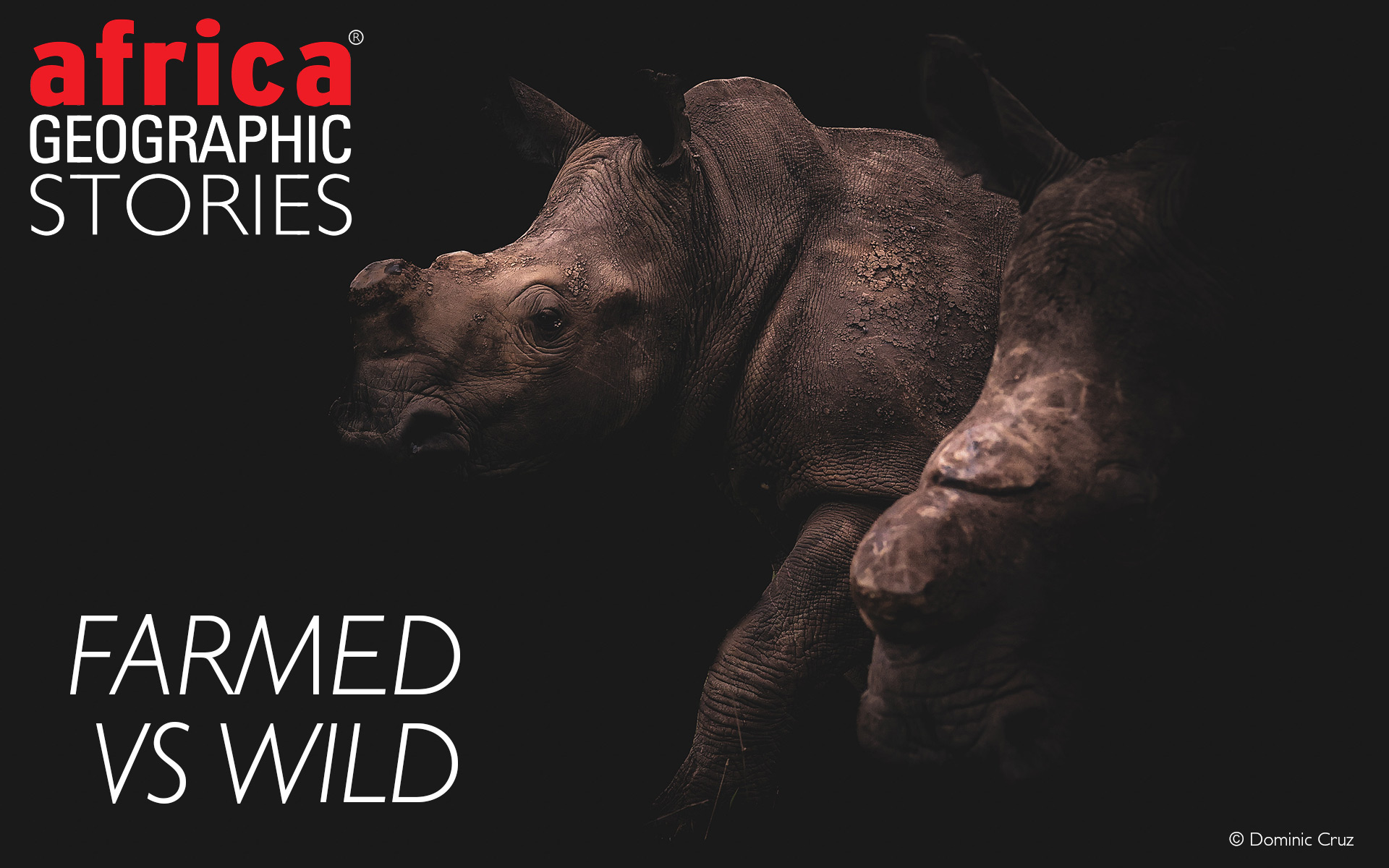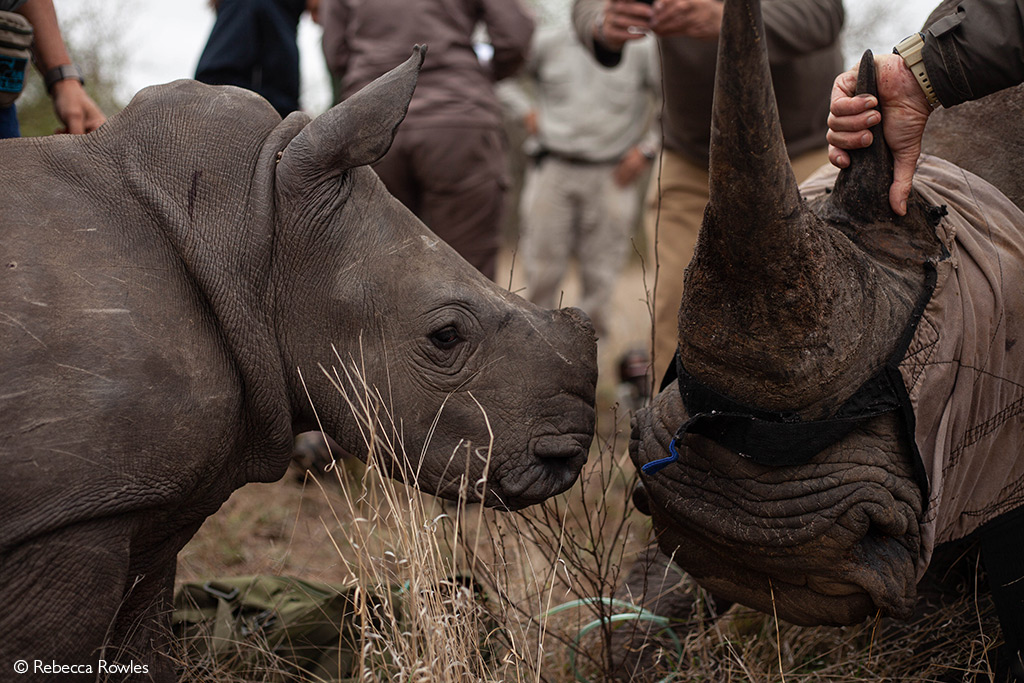

As conservationists and rangers work around the clock to protect Africa’s rhinos, scientists on the other side of the globe are attempting to unravel different aspects of the trade: including the perspectives and market preferences from actual consumers of rhino horn. Do these consumers prefer the horn of a wild rhino over that of a “farmed” or captive rhino? The answer to this question has a significant bearing on the potential impact of legalising the trade in rhino horn.
Rhino populations in Africa continue their dizzying decline due to poaching. The Kruger National Park – a protected area in South Africa where populations were once thriving – for example, has experienced a 75% decline in population numbers in the past 10 years. Conservation circles are locked in a fierce debate on whether legalising the horn trade would save these iconic animals or be the instrument of their final destruction. (A complete summary of the nuances of this debate can be found here: Rhino horn trade – yes or no.) The success or failure of a controlled trade strategy will depend on several factors, including how the market develops if legal restrictions are removed. This is a complex question involving everything from economics to sociology, and it is almost impossible to predict accurately.
The history of wildlife trading has shown that wildlife farming can benefit species conservation under certain specific conditions. In particular, the end consumer would need to consider the farmed/sustainably harvested products to be equal in quality and status to wild products and to be a suitable substitute¹ ². If consumers who buy rhino products prefer horns from wild rhinos, this would constitute a threat to the remaining population of wild rhinos.

What does the research say about the rhino horn debate?
The two largest rhino-horn markets are in China and Vietnam³, and much of the market research conducted in recent years has focussed on consumer surveys in these regions.
- The most recent study⁴, published at the end of 2021, identified 345 rhino horn consumers in Vietnam, where the horn is used as a treatment for hangovers and fevers, and as a detoxifying agent. The researchers found that, on average, those surveyed were willing to pay more for horn from wild or semi-wild rhinos due to the belief that these have more potent medicinal properties. (A summary of their methods and conclusions can be accessed here.) Notably, wealthy respondents with a high “need” for rhino horn favoured wild rhino horn, while those with lower incomes and a lower “need” for rhino horn preferred semi-wild horns over wild horns.
- A previous study⁵ by two of the authors of the above research found that 73% of survey respondents in Vietnam preferred wild horn to horn from farmed animals. One consumer stated, “I am willing to pay more for the wild ones, even double. Even though there was a legal trade rhino horn, I would only buy the wild ones [sic]”.
- Another study conducted using similar methods that approached the question from a slightly different angle⁶ found that consumers preferred wild horn over semi-wild and farmed products. However, there was a definite preference for horns harvested in a sustainable, nonlethal manner: “the finding that [those surveyed] strongly prefer horn acquired from nonlethal harvesting has not been reported previously and suggests that horn sourced humanely from living rhinos would attract a premium in the market”.
- A study that focussed on traditional Chinese-medicine practitioners in Hong Kong⁷ found a similar pattern. Though this research did not specifically address the distinction between wild and farmed horn, 50% of the practitioners interviewed expressed a preference for sustainably harvested horn should the trade be legalised. The remaining half suggested that they would not distinguish between sustainably harvested or lethally obtained horn.


A word of caution?
It is important to note that there are inherent limitations in market surveys conducted in a “what if” scenario. It is challenging to expand these responses to predict the ultimate market behaviour should the trade in rhino horn be legalised. This applies to arguments both for and against the legalisation of rhino horn trade and is in large part responsible for the deadlock in making the call one way or another.
Critics of the research into wild/farmed horn consumer preferences suggest that “the wild versus farmed narrative is based on assumptions that over-simplify consumer behaviour and can lead to conclusions that do not recognise the complexity of real wildlife markets”⁸. Hinsley and t’Sas-Rolfe (2020) argue it is challenging to link preferences with real-world behaviour, as other confounding factors (such as legality or availability) may also play an influential role.
Naturally, the legal trade in rhino horn is both a scientific and ideological conundrum, and subconscious biases could impact scientific methodology and conclusions. Even the terminology used could potentially influence consumers. For example, rhinos in South Africa are generally not “farmed” in the way people might think of feedlot cattle, and most private rhino owners operate a semi-intensive system. Creating a distinction between “farmed”, “wild”, and “semi-wild” was a vital step in the research process.
When preference could kill
It is clear from available science that if given a choice between horns from wild rhino and farmed rhino, many consumers show an evident preference for wild horn. This tendency to associate increased potency or effectiveness with wild-sourced products is seen in traditional medicine involving other wild species such as tigers⁹. How this will translate in terms of behaviour is more challenging to predict.
Regardless, these preferences need to be taken seriously. Supposing legal rhino horn enters the market, the wealthiest users may still be willing to pay a premium for wild rhino horn. In that case, a preference for wild horn could drive wild rhino populations to extinction.

References
- L. Tensen, Under what circumstances can wildlife farming benefit species conservation? Global Ecology and Conservation, 6 (2016), pp. 286 – 298
- D. Biggs, F. Courchamp, R. Martin, H.P. Possingham, Legal trade of Africa’s rhino horn, Science, 339 (2013), pp. 1038-1039
- J.A.J. Eikelboom, R.J.M. Nuijten, Y.X.G. Wang, B. Schroder, I.M.A. Heitkönig, W.M. Mooij, F. van Langevelde, H.H.T. Prins, Will legal international rhino horn trade save wild rhino populations?, Global Ecology and Conservation, 23 (2020)
- H.N.D. Vu, M.R. Nielsen, J.B. Jacobsen, Conserving rhinos by legal trade: Insights from a choice experiment with rhino horn consumers, Ecological Economics, 193 (2022)
- H.N.D. Vu & M.R. Nielsen, Understanding utilitarian and hedonic values determining the demand for rhino horn in Vietnam, Human Dimensions of Wildlife, 23:5 (2018), 417-432
- N. Hanley, O. Sheremet, M. Bozzola, D.C. MacMillan, The allure of the illegal: choice modeling of rhino horn demand in Vietnam, Conservation Letters, 11 (2018)7.
- H. Cheung, L. Mazerolle, H.P. Possingham, D. Biggs, Medicinal use and legalized trade of rhinoceros horn from the perspective of traditional Chinese medicine practitioners in Hong Kong, Tropical Conservation Science, 11 (2018), 1-8
- A. Hinsley, M. ‘t Sas-Rolfes, Wild assumptions? Questioning simplistic narratives about consumer preferences for wildlife products, People and Nature, 2 (2020), 972– 979
- B. Gratwicke, J. Mills, A. Dutton, et al. Attitude toward consumption and conservation of tigers in China. PLOS ONE, 3 (2008)
To comment on this story: Login (or sign up) to our app here - it's a troll-free safe place 🙂.![]()




